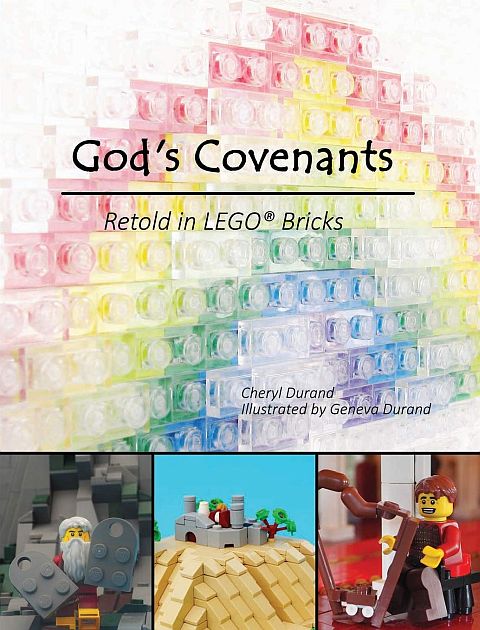(Written by William)
When LEGO fans (including myself) first heard about the #76112 LEGO App-Controlled Batmobile, there was great excitement about its potential. However, when images of the set were finally revealed, we were all scratching our heads. The price seemed high, even with the new LEGO Powered Up components, and the vehicle didn’t look like the Batmobile. So, I figured this would be a great set to review and see what it’s all about.
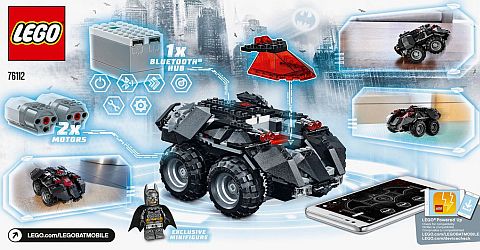
After having the chance to build the set and spend some time playing with it, I can confidently say it’s not bad, even for the full price. I think it’s just unfortunately named. It’s certainly a Bat-vehicle, but it is in no way the Batmobile. The issue is that the Batmobile is an iconic car with distinct shaping and features that fans would expect. And, because this vehicle doesn’t match those features, it turned off a lot of LEGO fans even before they were willing to give it a try. To me, it appears to be closer to the Batman Tumbler, or a cross between a racing tank and a monster truck. I call mine the Bat Stunt Tank.

The high price is another turnoff. The set only has 321 pieces, and the price is $99.99. That’s over 30 cents a piece! Consider though that many of these pieces are not ordinary LEGO elements. You get two of the new LEGO Powered Up Simple Medium Linear Motors. They are about the size of the traditional medium-size LEGO Power Functions Motor, and costs $24.99 each when purchased individually. So, you get about $50 worth of motors alone. Then, you also get the new LEGO Powered Up Hub, which serves as the battery box for six batteries and as a Bluetooth receiver. Think of this as a combination of the traditional LEGO Power Functions battery box and IR receiver in one unit. Individually, the LEGO Powered Up Hub sells for $49.99. This is higher than the combination of the traditional LEGO Power Functions battery box for $12.99 and the IR receiver for $14.99, but even those would add up to about $28. Considering all of this, the price per piece ratio for the remaining of the parts sounds a lot more reasonable.

Since this is my first real experience with the new LEGO Powered Up system and functions, I would like to spend a little time talking about the system itself, including its pros and cons, the we will discuss one of the unique building techniques that really stood out for me involving effective gear usage. So strap in and prepare for the ride!
LEGO POWERED UP SYSTEM
“There’s an app for that,” has never been a truer statement. As with most companies, LEGO did not want to be left behind by not utilizing the world of smart devices. So, since the IR system for LEGO Power Functions was due for an update anyway, the timing was perfect to introduce a new app-based system. After building the set and ready to play with it, the first thing I was instructed to do was to update the app. Overall, this appears to be a much more sophisticated system that can still handle the most basic functions. It may take some time to work out the kinks with the app, but it’s nice to know that you always have a remote nearby your LEGO Powered Up model if you have a smart device present.

It’s not all sunshine and roses though. The controls for LEGO Powered Up are a totally different app than for the other electronic systems like LEGO BOOST. Additionally, there is no text anywhere on these apps, so it takes a lot of trial and error to decipher icons and hope to understand what’s being communicated to the model.

Then there is the issue of troubleshooting. If something goes wrong, you have to guess in order to fix it. I’ll give you an example. The first time I turned the system on, it did nothing. The app was working fine and making all sorts of noises, but the vehicle (the awesome Bat Stunt Tank!) just sat there. Turns out I had mixed battery brands, which the building instructions tell you not to use. I figured it shouldn’t matter as they were all new AAA batteries, but it did.
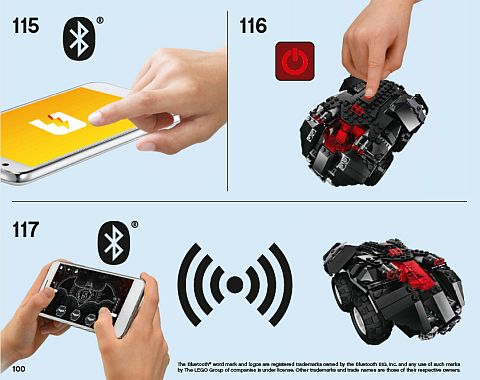
I’ve also heard from a friend that if you are in a place where there are a lot of cell phones, they can interfere with the LEGO Powered Up signal. The instructions do point out that in areas with lots of electromagnetic signals the system may need to be restarted. In the video below, I summarize these plusses in minuses in a bit more detail.
All in all, LEGO Powered Up is a pretty big improvement in getting a more advanced system to control your LEGO models. However, it is rather unreliable if you plan to use it for large displays.
GEAR CHAINING WITH LEGO
LEGO is really great when it comes to working with gears, but it can take a bit to understand how gears come together. I myself consider gear work a bit over my head at times, so that’s why it is important to stop and demystify gear usage in small digestible ways.
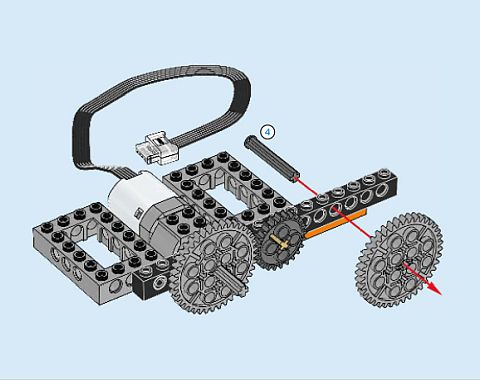
Let’s take one of the sides of this set (the Bat Stunt Tank!) as an example. There are only three gears. The two larger ones go right behind the tires and the smaller one chains them together. The actual chaining doesn’t seem scary at all. But what we may fail to realize is that small middle gear could be any size we want. As long as the gears on either side of the chaining gear are the same, they will turn at the same speed no matter what gear we use in-between. Now, the speed of the middle gear can change drastically. The smaller it gets, the faster it will spin, while the larger it gets, the slower it will spin. Meanwhile, the outside gears operate at a one-to-one ratio.
There can be all sorts of gears added to this chain, but as long as the first one and the last one are the same size, they will turn at the same speed. That’s because you are moving them a specific number of teeth. There is one important point to all of this; each and every gear in the chain has to have its own axle. If it doesn’t, and different sized gears share an axle, that’s when you start seeing different speeds.
APPLYING WHAT YOU LEARN
When it comes to LEGO Powered Up, this is a fun system for personal use. However, if you aren’t fond of smart devices or plan to have a model at a large public display, you would probably want to continue using the older LEGO Power Functions system until it’s available.

If you are powering up a LEGO model, chances are that somehow gears are involved. A chain can exist with any size of gear, provided they have their own axle and the gears are the same size on either end (if you want to maintain an equal speed). Also, this works primarily with standard gears. I’m not sure how it applies to things like worm gears which look more like a spindle or coiled tube. Just remember, it’s not that intimidating if you come at it with a little knowledge. Good luck, and happy building!
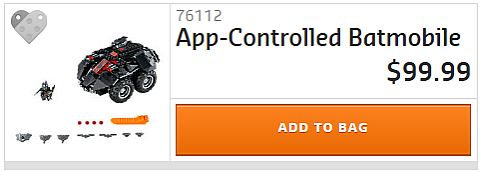
What do you think? How do you like the #76112 LEGO App-Controlled Batmobile? Do you have the set already? Or are you planning to get it? How do you like the new LEGO Powered Up system? And what is your experience working with gears? Feel free to share your thoughts and own reviews in the comment section below!
And you might also like to check out the following related posts:


